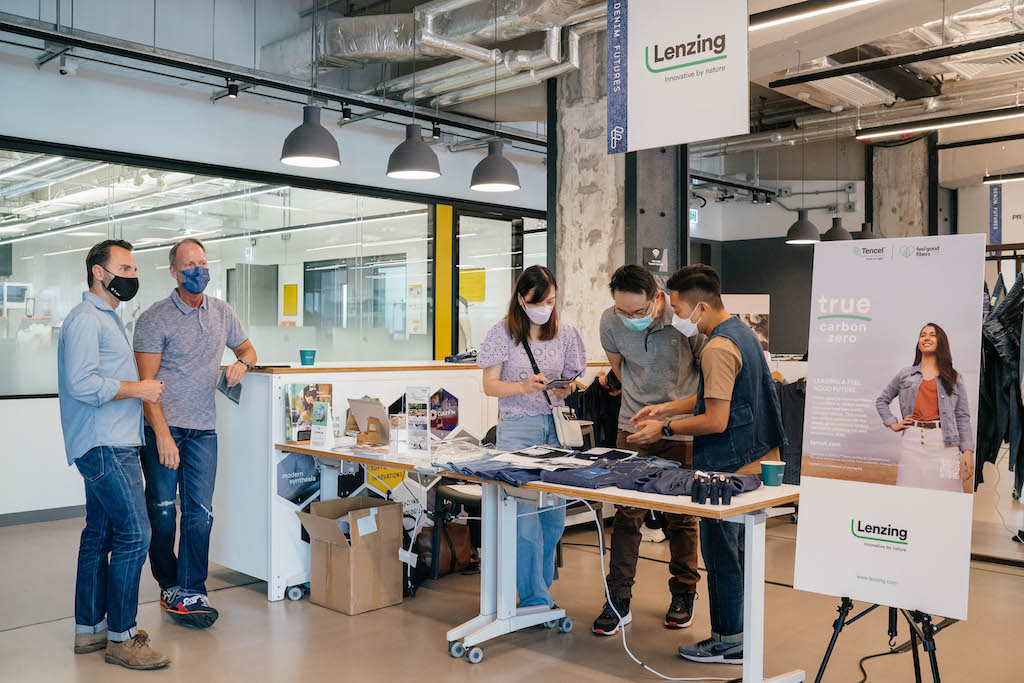5 Mins Read
Jeans are ubiquitous but their production process is far from sustainable. A host of new techstyle innovations promise to make denim lower impact and toxin-free.
More than ever, consumers are demanding to know more about where and who makes their clothes and the environmental impact associated with their production – both in terms of greenhouse gas emission (GHG), chemicals and water used.
The fashion industry is responsible for up to 10% of global GHG emissions, of which upstream production is responsible for 71% of fashion’s total GHG emissions with 23% from usage, and end-of-use and brand operations account for just 6%. This represents signification room for collective change.
As the industry undergoes and plans for the next normal after COVID-19, innovation will be the key driving force in making the entire fashion supply chain more environmentally friendly. This is especially true for the denim industry, which has been increasingly under public scrutiny for its role in resource usage, release of chemical pollutants, and worker welfare.
Denim Futures, a conference organized by The Mills Fabrica earlier last month, invited key players in the denim industry to come together to exchange and discussed how denim should and need to evolve with the changing needs of our time. A number of innovations were also highlighted showing the possibility of significantly reducing energy, water, chemical consumption and GHG emissions across the entire denim supply chain.

Denim innovation is booming
One such example is Lenzing’s Tencel ™ Model Fiber with Indigo Technology. An innovative fiber that directly inserts indigo pigment during the fiber production process. By doing this, they eliminate almost 100% of water and electricity use, and more than 80% of chemicals, and release minimal amounts of wastewater, when compared to the conventional powder indigo dyeing technique.
Lycra’s COOLMAX® EcoMade technology is another innovative fiber that’s made from 100% textile waste or recycled PET bottles, and at the same time provides better functionality leading to better cool and dry comfort. Lycra also has other innovative and sustainable fibers that are made from blends of recycled and plant-based materials.
Innovation in the finishing processes is equally important in making the production process more sustainable. Jeanologia’s G2 Dynamic uses ozone technology for continuous fabric finishing – turning the air in the atmosphere into ozone and using it to create color degradation effects. It’s been reported that it can save up to 95% of water, 100% of chemicals, 80% of energy, and 40% of carbon footprint. Their latest innovation H2 Zero which recycles and reuses the water in the laundry process for the finishing process makes for an even more sustainable practice.
Archroma has developed a range of liquid dyes such as its Denisol® Indigo 30 Li, a cradle-to-cradle(C2C) certified dye that generates approximately 50% less wastewater, is aniline-free, and uses fewer operational resources.
Unspun, who spoke at the event, highlighted how they utilize 3D scanning technologies to create custom-fit and on-demand production that not only reduces manufacturing fabric waste but also inventory and returns. In the manufacturing process, they also use Resortecs’ Smart Stitch ™, a dissolvable thread, which makes their jeans more efficient to recycle; reducing fabric loss associated with the disassembly of garments during the process of textile recycling. Resortecs’ Smart Disassembly™ system, combined with their Smart Stitch ™ has the potential to reduce water usage by 3,500L, up to 50% CO2 equivalent compared to other closed-loop recycling systems.
A critical component in making fashion circular is scaling up the availability of fiber-to-fiber recycling. Currently, 92 million tonnes of textile waste is generated annually with less than 1% of which is recycled back into fiber. The good news is that innovations are already taking place within the industry by the likes of Renewcell with their Circulose®, Circ with their patented recycling technology, NuCycl by Evrnu, HKRITA’s Garment-to-Garment recycling system (G2G) and The Billie System – which ranges from mechanical recycling to chemical recycling targeting both natural and synthetic fiber. As these and other technology mature, it’s likely the recycling rate will increase and is predicted to reach between 18% to 26% in Europe by 2030.

‘Reinventing The Future of Jeans’
A recurring theme in the conference is that the future of denim lies in the greater adoption of existing innovative technologies across the entire denim supply chain. At the same time, it’s equally important for consumers to understand how and where to find truly sustainable and innovative technologies. Only then can consumers truly appreciate and understand the problem and be more willing to purchase denim at a premium price.
What’s apparent is the fact that all these existing innovative elements ought to be incorporated at the design stage of a denim garment. The Mills Fabrica, being the innovation platform of Nan Fung Group, in combination with our industry partners, is taking this mantra and creating a proof-of-concept denim project called Reinventing the Future of Jeans. The purpose of this project is to engineer a pair of jeans that incorporate innovations across its entire lifecycle. Showcasing to the public that denim can evolve – like how it’s always been – with the changing needs of our time and bring much-needed awareness to the public that denim can have a sustainable future.
All photos and diagrams by The Mills Fabrica. Lead Photo courtesy of unspun.
This is a Green Queen Partner Post.



